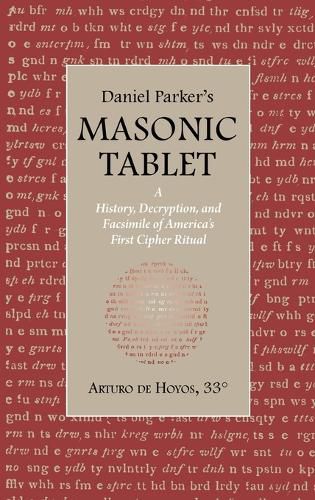Readings Newsletter
Become a Readings Member to make your shopping experience even easier.
Sign in or sign up for free!
You’re not far away from qualifying for FREE standard shipping within Australia
You’ve qualified for FREE standard shipping within Australia
The cart is loading…






This title is printed to order. This book may have been self-published. If so, we cannot guarantee the quality of the content. In the main most books will have gone through the editing process however some may not. We therefore suggest that you be aware of this before ordering this book. If in doubt check either the author or publisher’s details as we are unable to accept any returns unless they are faulty. Please contact us if you have any questions.
Prior to the early nineteenth century American Masonic lodges didn't have standard forms of initiation rituals. Although they were generally similar, there were occasionally tremendous variations. This began to change with the publication of Thomas Smith Webb's Freemason's Monitor (1797), the first American Masonic guidebook. It offered standardized language to teach some of the fraternity's lessons. The secret initiation ceremonies, however, were taught "mouth to ear" by Webb (for a fee) to his student "lecturers," who in turn taught their own students (also for a fee). Webb's ritual was transcribed in private books, in a one-to-three lettered cipher code. In 1822 the Rev. Daniel Parker printed his own clever cipher ritual, which by-passed the need for private tutors, as a supplement to Webb's Masonic monitor. His Masonic Tablet offered the earliest full description of American Craft and York Rite rituals.
The author's introduction gives a biography of Parker, and a history of his cipher. Also included are a complete facsimile of his work, and a full plaintext decryption of the earliest descriptions of the American versions of the degrees of Entered Apprentice, Fellow Craft, Master Mason, Past Master, Most Excellent Master and Royal Arch Mason. For comparative purposes, the appendices reproduce the original editions of William Morgan's Illustrations of Masonry by One of the Fraternity (1826), and A Revelation of Freemasonry (1827).
$9.00 standard shipping within Australia
FREE standard shipping within Australia for orders over $100.00
Express & International shipping calculated at checkout
This title is printed to order. This book may have been self-published. If so, we cannot guarantee the quality of the content. In the main most books will have gone through the editing process however some may not. We therefore suggest that you be aware of this before ordering this book. If in doubt check either the author or publisher’s details as we are unable to accept any returns unless they are faulty. Please contact us if you have any questions.
Prior to the early nineteenth century American Masonic lodges didn't have standard forms of initiation rituals. Although they were generally similar, there were occasionally tremendous variations. This began to change with the publication of Thomas Smith Webb's Freemason's Monitor (1797), the first American Masonic guidebook. It offered standardized language to teach some of the fraternity's lessons. The secret initiation ceremonies, however, were taught "mouth to ear" by Webb (for a fee) to his student "lecturers," who in turn taught their own students (also for a fee). Webb's ritual was transcribed in private books, in a one-to-three lettered cipher code. In 1822 the Rev. Daniel Parker printed his own clever cipher ritual, which by-passed the need for private tutors, as a supplement to Webb's Masonic monitor. His Masonic Tablet offered the earliest full description of American Craft and York Rite rituals.
The author's introduction gives a biography of Parker, and a history of his cipher. Also included are a complete facsimile of his work, and a full plaintext decryption of the earliest descriptions of the American versions of the degrees of Entered Apprentice, Fellow Craft, Master Mason, Past Master, Most Excellent Master and Royal Arch Mason. For comparative purposes, the appendices reproduce the original editions of William Morgan's Illustrations of Masonry by One of the Fraternity (1826), and A Revelation of Freemasonry (1827).